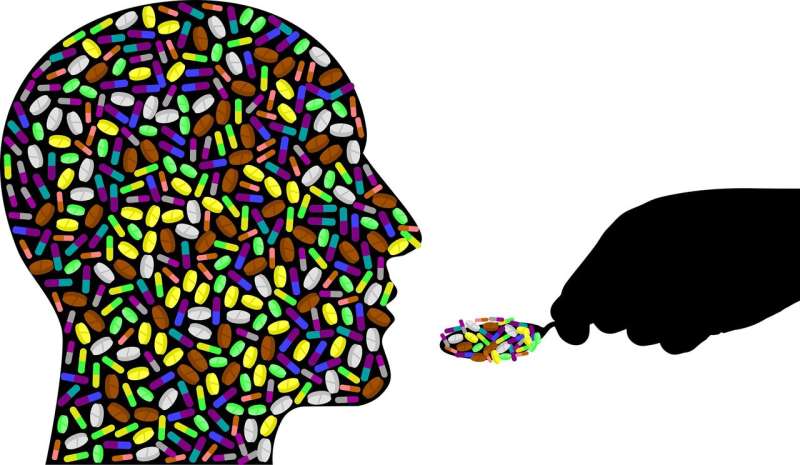Problematic opioid behaviors are dynamic and time-limited, new study finds

Problematic opioid use behaviors are typically dynamic and time-limited, a new study by researchers at the National Drug and Alcohol Research Centre (NDARC), UNSW Sydney has found.
Researchers analyzed five years of survey data from 1,514 adults who were prescribed opioids for chronic non-cancer pain (CNCP).
Lead author, Scientia Professor Louisa Degenhardt said, "The findings challenge a common view that the risk of opioid-related behaviors is static and that risk assessment at the start of opioid treatment can predict which patients will develop opioid use disorder."
"Patient monitoring needs to be ongoing, as extramedical use or concerns may sometimes occur. Monitoring tools to predict risk may be improved by considering dynamic factors, such as fluctuations in pain severity and interference, pain self-efficacy, depression, and anxiety."
The study examined the prevalence, incidence, cessation, and persistence of four opioid use behaviors and three indicators of extramedical use and harm.
"These behaviors were not stable within individuals over time and typically only occurred one or two points across five years of follow-up," said Scientia Professor Degenhardt.
"This suggests that even among a cohort of people with long standing CNCP, long term opioid use, and multiple physical, mental health, and substance use disorder comorbidities, indicators of problematic opioid use are dynamic and time-limited—not chronic and recurring."
The study also revealed important findings on opioid cessation.
"In patients with CNCP who are using opioids for long-term pain management, a minority ceased opioids in any interview, and this also changed throughout interviews," said Scientia Professor Degenhardt.
"The findings suggest some individuals with a long history of opioid use for CNCP do not maintain a consistent pattern of opioid use."
"Those individuals who report ceasing their opioid use were less likely to express concern about its adverse effects on their lives and functioning and reported having a greater capacity to cope with pain."
More information: Louisa Degenhardt et al. Pharmaceutical Opioid Use Patterns and Indicators of Extramedical Use and Harm in Adults With Chronic Noncancer Pain, 2012-2018, JAMA Network Open (2021). DOI: 10.1001/jamanetworkopen.2021.3059





















